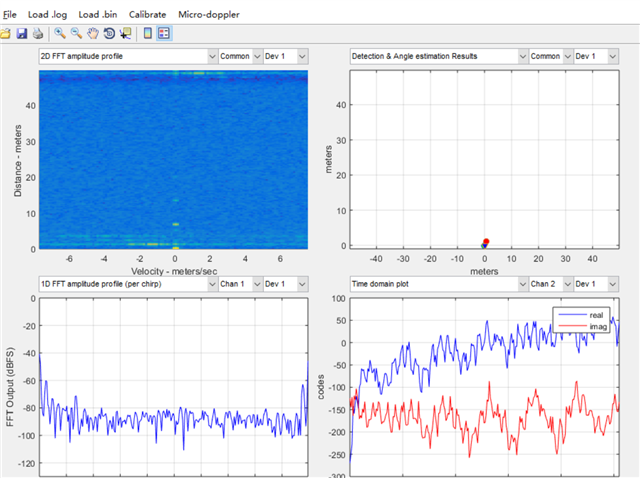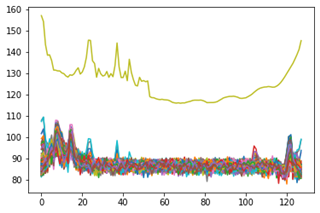Other Parts Discussed in Thread: IWR6843AOP, AWR1243
Hi,
I'm capturing data with mmwaveStudio 2.1.0 from IWR6843AOP with the default configuration script `\DataCaptureDemo_xWR.lua`. The radar is placed in a darkroom proved scilent with AWR1243, yet an abnormal signal appeared on 6843 RD image as shown below. It appears on certain range bins across a wide span of Doppler. I wonder if you could provide any debugging suggetions.
Also, could you please confirm that for continuous streaming mode, does the device begin transmission after I click enable button from mmwaveStudio? I mean to have it transmitt only without capturing. The manual seems unclear to me.
Regards
RD abnormal



